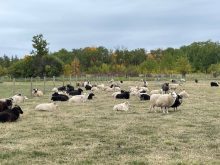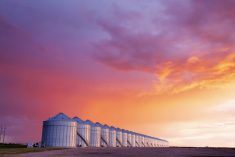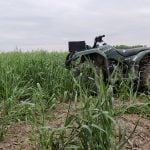They were good calls at the time.
Just a few weeks ago a clutch of farm writers from across Canada converged on Glacier FarmMedia’s Ag in Motion show west of Saskatoon. Some of those writers, myself included, drove past quite a lot of handsome crops en route. In some stretches, the usually blue watery mirages where the Prairie road meets the horizon turned bright yellow.
When we all arrived, our colleague Bruce Burnett, director of weather and markets for Glacier FarmMedia, confirmed those observations based on his own more-intensive 3,500-km road trip through the three Prairie provinces’ main growing regions. He wasn’t alone. Other analysts and observers used words and phrases ranging from “very good” and “very clean” to “unbelievable” and “best…ever.” It was more than fair for analysts to describe 2024 as a bumper crop in the making.
Read Also

Gentle treatments for pain in the neck
Heading toward year-end, people unknowingly tense up against the cold and busyness, causing neck pain that can often be treated with appropriate support and gentle mobility, athletic therapist Kathlyn Hossack says.
But July’s heat — impossible for anyone to ignore during the show — was already qualifying some of those observations. “We’re in that period where it’s either going to stay great or it could start to trend off a little bit,” Breen Neeser of FBN told Sean Pratt of the Western Producer.
And by the time the three-day show was done, we were already hearing from many Prairie growers that the bumper crop assessments, only just going public, would not apply to some of their crops. Spells of 30 C and hotter were piling in on top of four to eight weeks of below-average precipitation.
Provincial-level crop reports the following week corroborated the dire farm-level reports. The Alberta report as of July 23 found the heat “was prolonged enough that major crop conditions significantly declined from 73 per cent good to excellent last week to 55 per cent good to excellent,” the latter mark being below both the five- and 10-year averages.
Saskatchewan’s report, covering the week ending July 22, found “multiple extremely hot days during the critical flowering stage of many crops has likely lowered yield potential in some areas… (and) crops in the driest areas of the province, mostly early-seeded pulses and cereals, are close to being ready for harvest.”
And that already-lower yield potential has since dwindled more, the province said in the following week’s report: “Producers are hoping for moisture to help with head and pod filling on later-seeded crops, but for many advanced crops, any moisture received would have little impact on yield at this stage.”
Manitoba’s report, dated July 30, found while sunflower growth “progressed rapidly” and many corn crops could even still use continued heat, canola crops were seeing “increased flower blast due to the very warm temperatures.”
Optimists like me still grasping for any hopeful straws can look to that July 23 Alberta report, which also says that “while rain and marginally cooler temperatures are in the near forecast, the true effects of the prolonged heat and potential positive impacts of rain will be unknown for a few weeks.”
“A few weeks,” of course, will also pass before what I just wrote here (Aug. 1) arrives in your mailbox, so you’ll probably be able to look up from this page, look out the window and drop me a line to let me know what the “true effects” turned out to be.
All of this goes to make my concluding point: crop forecasting is a thankless job. Thankless, but necessary. Objective, wide-angle observations, including those Bruce gathered on his long summer drive, are crucial to help farmers and marketers make the kinds of decisions that often need to be made before the crop lands in the bin.
And if I may repeat myself: given the Prairie crop’s potential in the weeks leading up to Ag in Motion, those were good calls at the time. Longer-range weather forecasts in previous weeks had called for warmer-than-normal summer temperatures and those were proved correct, but the precipitation outlooks were less clear. And in any before-the-fact forecast in any industry, some assumptions — usually, based on a return to the mean or to near-normal — need to be made.
After all, if everyone around here always assumed the absolute worst, how much of this part of the world would have gone into annual crops in the first place?
















